Grilled Duck Breast: Sure-fire Recipe With Temperature Tips
With fall in full glory, I’m turning to hearty, comforting dishes. I haven’t abandoned the grill to the snowy wastes just yet (and, in truth, I do grill some throughout the winter), so something hearty, autumnal and grilled sounds just about right, and that’s where grilled duck breast comes in.
Duck breast is wonderful. Warm, hearty, steak-like, and perfect when cooked to medium-rare (yes, it’s safe), duck is a great autumn meal. Whether you hunt your own or buy farm-raised, grilled duck breast is the perfect fall dish. Here, we’ll give you the thermal tips you need to succeed at grilling duck breast. Hint: you do not want to just toss this meat on the grill! Read on to learn more.
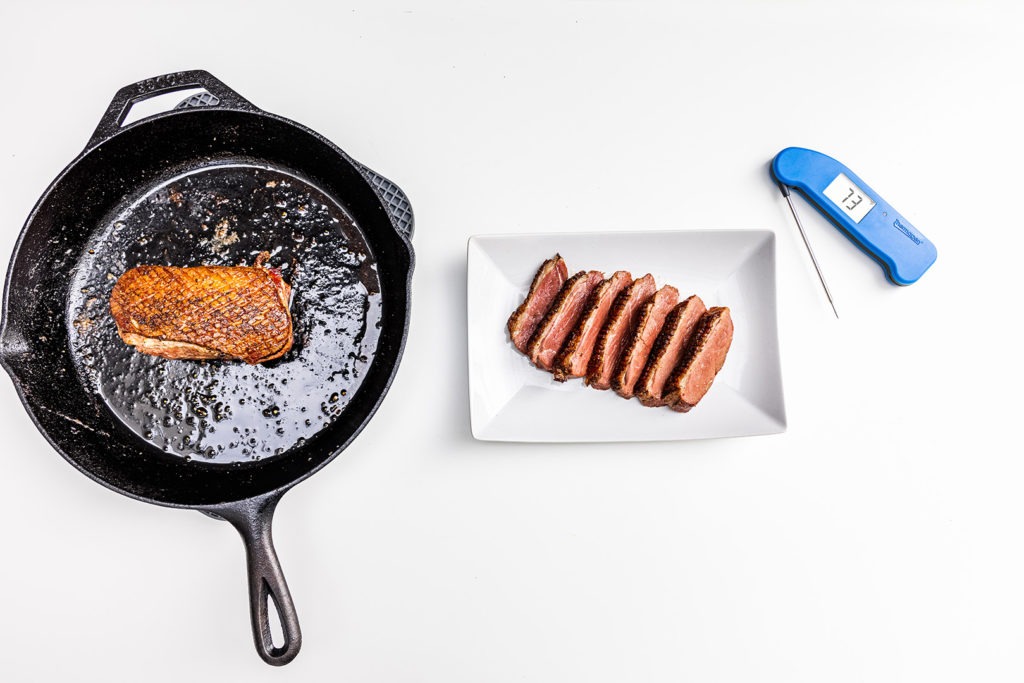
Grilled duck breast difficulties
Best when done no higher than a tender medium-rare, duck breast takes care and time to cook properly. While it’s by no means difficult, I wouldn’t classify seared duck breast as “beginner” cooking.
Grilling duck breast presents two particular difficulties. One is that the skin side and the meat side need to be cooked differently. The skin must be well-rendered, lest the thick fat layer remain squidgy and gummy. A well-cooked duck breast will have skin that is crisp and toasty, like bacon, with no hint of chewy fat. The second difficulty stems from the first: if all that fat were to render out onto the coals of a grill, the resulting fireball would leave nothing but a charred, inedible mess.
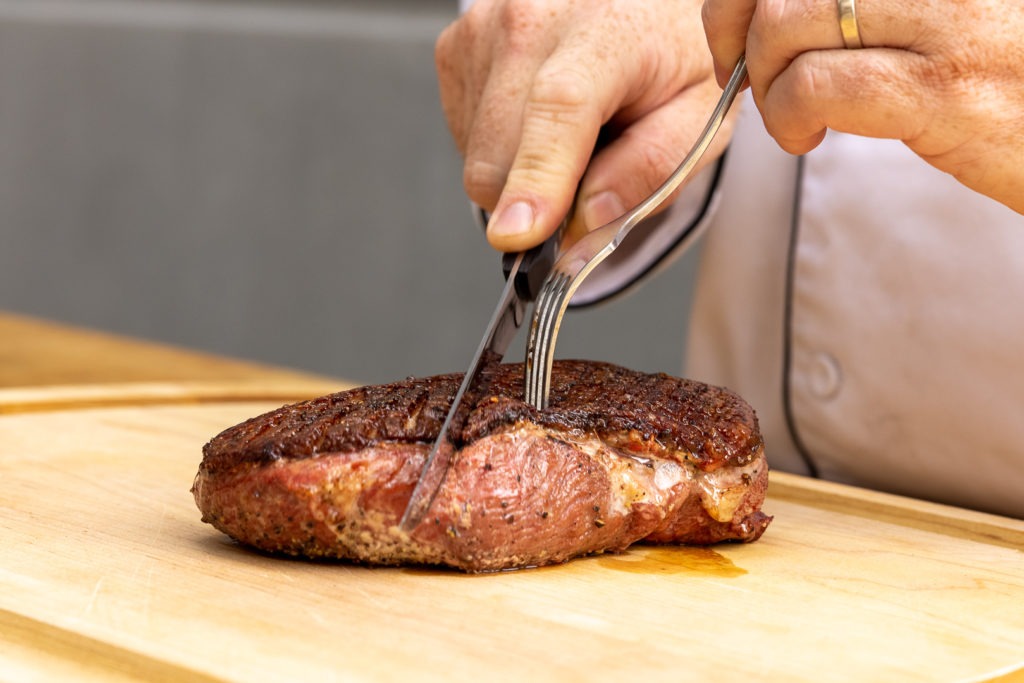
Grilled duck breast solutions
The solutions to both of these problems come in one handy, sturdy package: a cast-iron pan.
By cooking with a cast-iron pan set on the grill, we can catch all the rendered fat, keeping it from dripping down onto the glowing coals and igniting. This allows us to take the time to properly render the breast without trepidation. Plus, by catching all the fat, we can repurpose it for other culinary purposes after this cook.
When rendering duck breast, it’s important to keep the pan from getting too hot. A single layer of coals—perhaps even spread out a little—set below the pan is enough to keep the fat bubbling slowly without popping, splattering, or getting angry.
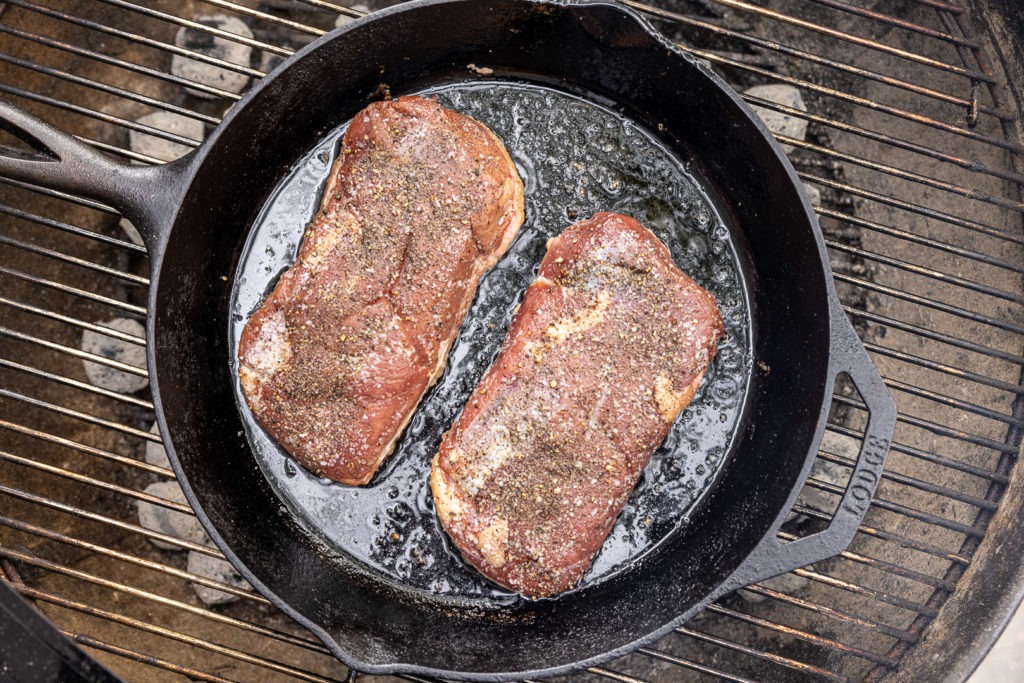
Grilling duck breast
“Wait. So why not just cook the duck inside? That hardly counts as grilling.” Wrong. Once the fat from the skin side is well rendered, we move the duck, meat-side down, over the direct heat, adding a little more charcoal to the fire. As the juices and, yes, some of the fat drip down onto the coal bed they pyrolyze and re-condense on the surface of the meat—which is a fancy way of saying that the meat comes out tasting all grilly and delicious.
Depending on your ambient conditions, your duck will have cooked to some extent during the rendering phase. If it’s chilly out, I’d do the rendering with the lid down on your grill to allow the duck to cook gently in the ambient heat. Why? Well, we don’t want one side (the meat side) to have to spend a long time over direct heat, pumping thermal energy in. The meat side could get overcooked, robbing us of a nice, even medium-rare. By putting the lid on the grill, we warm the whole breast while the fat renders, decreasing the necessary searing time.
Give the duck a couple minutes over the open coals, then start checking it with your Thermapen® ONE to look for the proper doneness. There will be some carryover, so you’ll want to pull the meat from the heat at about 130°F (54°C). Let it rest for a minute or two and it should be perfect.
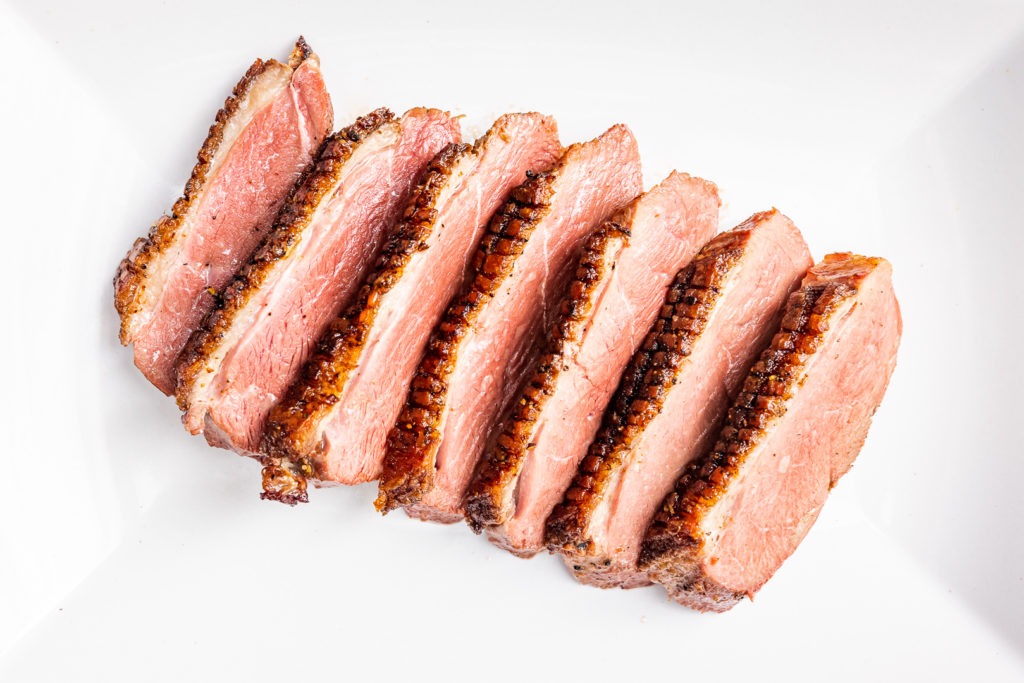
Getting the added flavor benefit of the grill on top of already-succulent duck is a win/win. And by cooking with thermal smarts—using a pan to render and catch the fat then checking the temperature with your Thermapen—you’re sure to get duck that you’ll be proud to serve. Give it a shot and let us know how it goes!
Print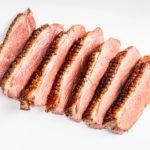
Grilled Duck Breast Recipe
Description
Grilled duck breast, slow-rendered and seared over the fire for flavor
Ingredients
Instructions
- Heat one chimney full of charcoal.
- Score the skin side of the duck breasts in a cross-hatch pattern with a sharp knife. Try to not score into the meat at all.
- Season the breasts with salt and pepper, rubbing the seasonings into the scoring.
- When the coals are heated, pour all of them except a few into your grill in one single, rather thin layer. Add more coals onto the ones remaining in the chimney to fill it halfway again. (Now you have almost one chimney full in the grill and half a chimney heating back up.)
- Place the cast iron pan on the grate above the coals.
- Place the duck breasts, skin-side down, in the pan.
- As they start to render, check the heat. You want enough heat in the pan so that the fat gently bubbles, but not so much that it’s spattering or acting angry. If your pan is too hot, spread the coals out a little bit more.
- Place the lid on the grill and cook, checking every few minutes.
- When a lot of fat has accumulated in the pan, pour it off into a heat-proof container for later use. Continue to cook. The rendering process should take 10-15 minutes.
- When the skin on the breasts is well rendered and a beautiful, chestnut brown, it’s time to sear. The internal temperature should be in the range of about 100°F (38°C).
- Remove the pan from the grill and add the half-chimney of coals to your coal pile.
- Place the duck breasts, without the pan, on the grill grate above the coals and cook, skin-side up.
- Take the temperature every couple of minutes. Use your Thermapen ONE to look for a lowest temperature of 130°F (54°C).
- When the pull temperature has been reached, remove the duck and allow to rest for a few minutes before slicing and serving.
Shop now for products used in this post:



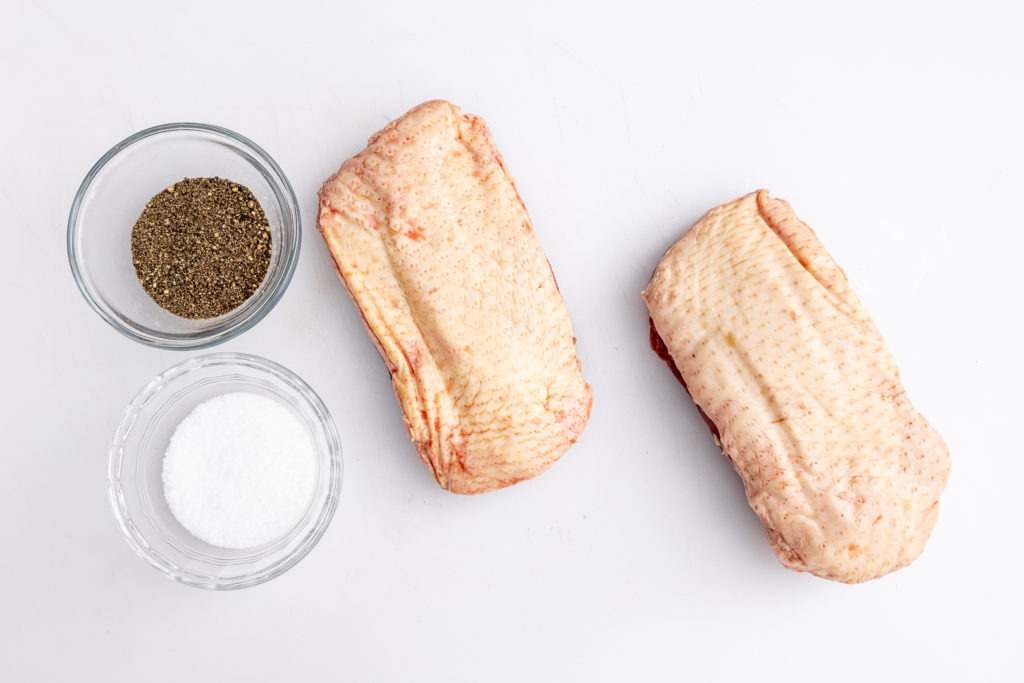
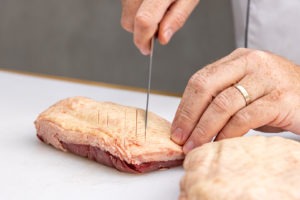
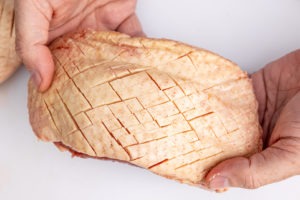
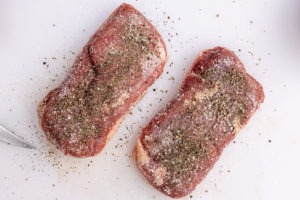
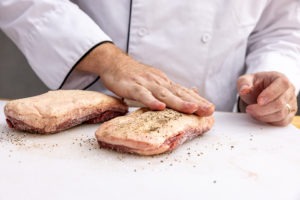
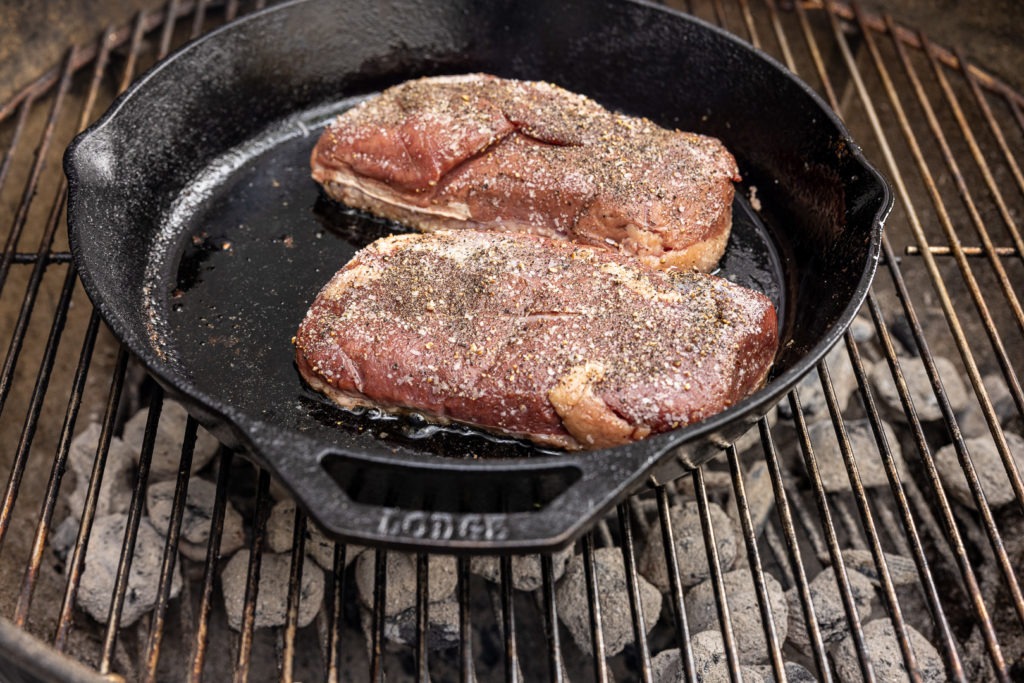
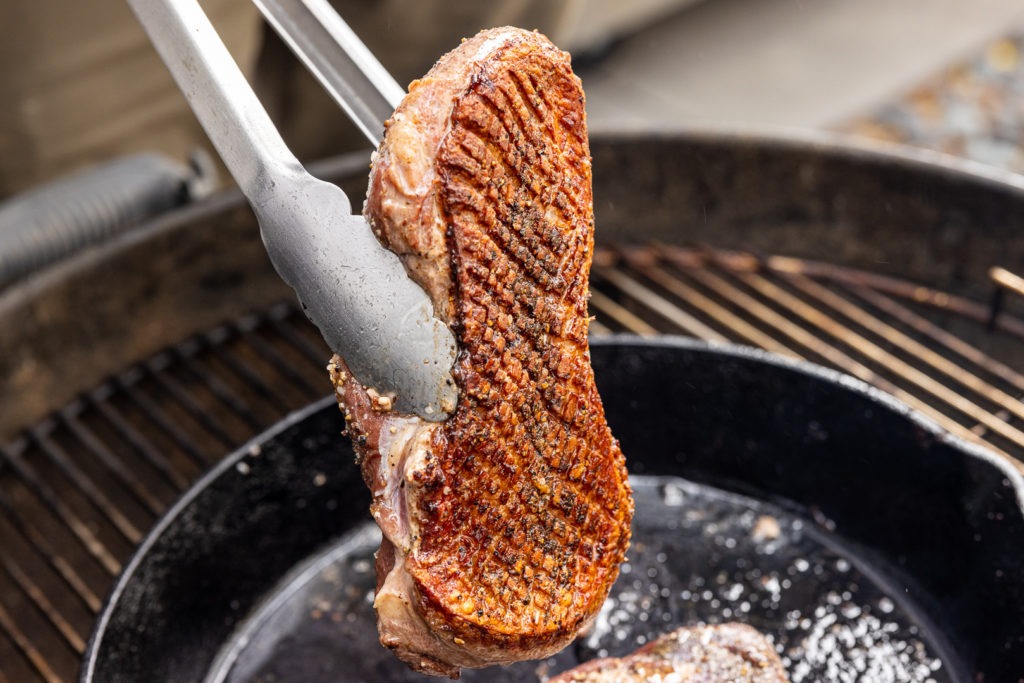
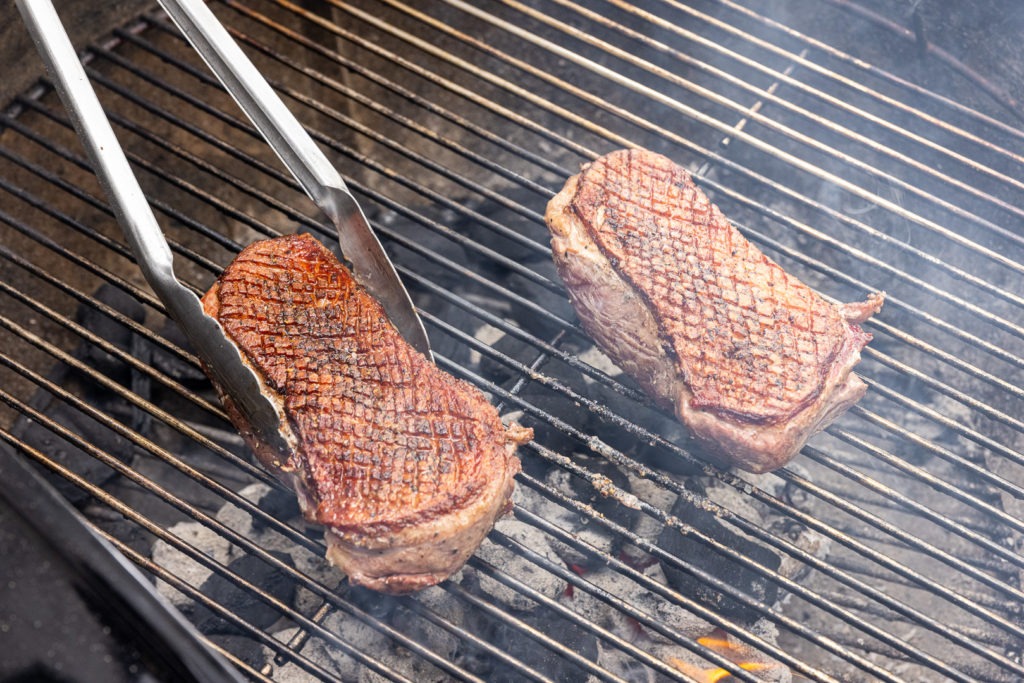
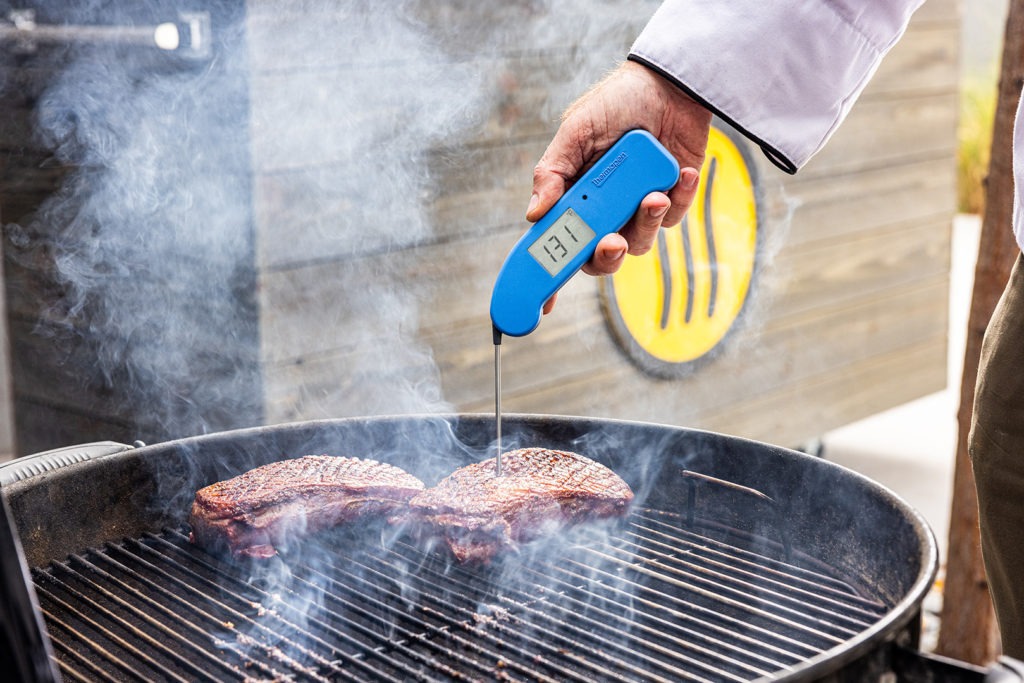
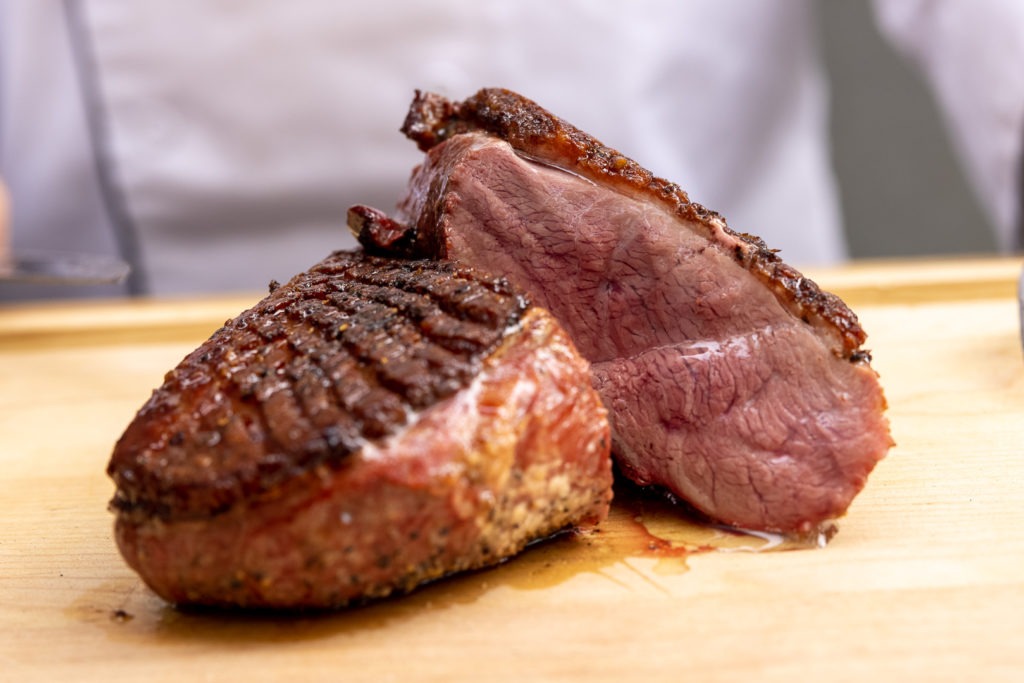

What is your not an Anglo Saxon and prefer your duck rare, not medium rare?
By all means, cook it rare! Knock 5–10 degrees off your pull temp.
Why does it not need to be cooked to 165 like other poultry?
Good question. It mostly has to do with processing. Duck is not processed on the same dirty/industrial scale as a lot of chicken, so there is less bacteria present, to begin with.
A more nuanced look at food safety tells us that in many ways, medium-rare chicken could be safe, too. The interior of any given muscle is, essentially, sterile. Bacteria is introduced into the deeper muscles. But because of the processing contamination and, frankly, hard-set ideas, we don’t try it. Well, and because chicken is weird and squeaky when undercooked.
I love the idea of this recipe but I can’t seem to get it to work using my gas grill to heat the skillet. The breast over cooks before I render all the fat. I’ve tried doing it over indirect heat but can’t seem to get the right temp that will let all the fat render and still allow me to finish the flip side. Rather than waste on expensive meat I now temp it to your suggestions but as I said the fat cap is still something less than bacon crisp. Any suggestions?
Leo,
You could render the fat in your skillet inside on a reliable stove, then take the meat outside to grill it to impart flavor and finish the job.
I love your comments. It’s unusual to read someone so practical! We enjoy cooking over fire. A lot is common sense (whatever that means). Rendering the fat is the key. And the soft smoke flavour is a complete luxury.